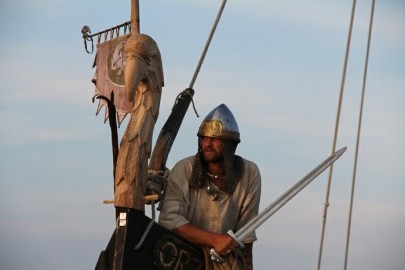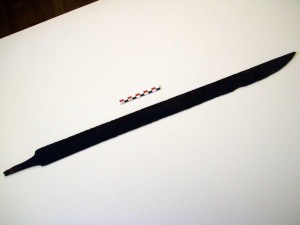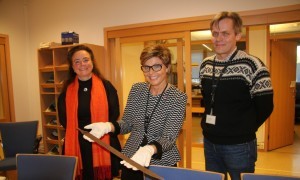While hiking an old mountain trail in Haukeli (on the border of Telemark County, Norway), Goran Olsen was surprised to discover a 1250 year old Viking sword among some rocks near the road when he sat down to rest. The sword was in excellent condition, especially considering its immense age.
The sword was taken to Hordaland County Council, where local archaeologists working for the council were elated to have the opportunity to study such a beautiful artifact. County conservator Per Morten Ekerhovd said, “It’s quite unusual to find remnants from the Viking age that are so well-preserved. It might be used today if you sharpened the edge”.
Preliminary analysis shows that the 30-inch (77 centimeters) iron sword is from about AD750, and according to Ekerhovd, it’s an important find that will shed light on early Viking history.
Wrought-iron arms and armor were expensive at the time and they were regarded as a high-status symbol. The owner of this sword was probably a wealthy and influential person and not some average Viking. Professor Alexandra Sanmark, a Viking expert at the University of the Highlands and Islands in Scotland, said: “The common idea about Vikings was that they wore big, metal helmets, but they probably wore leather helmets. The metal would’ve gone into making these fabulous weapons, which have more like steel, it’s really high quality.”
Norwegian archaeologists think that the sword is part of a burial for a high-status person. Wealthy individuals used to be buried with hundreds of valuable objects: weapons, armor, riding gear and even with their horses. The Viking sword has now been sent to the University Museum of Bergen for further study and restoration. Haukeli’s mountains are buried in frost and snow for six months, but due to climate change, artifacts have increasingly started to turn up along mountain paths in the last few years. Because of this, more clues are revealed how the Vikings lived and died.
Jostein Aksdal, an archaeologist with Hordaland County, plans to begin excavation on the location where the sword was found; he says that “If we find several objects, or a tomb, perhaps we can find the story behind the sword.”
Ask me anything
Explore related questions







